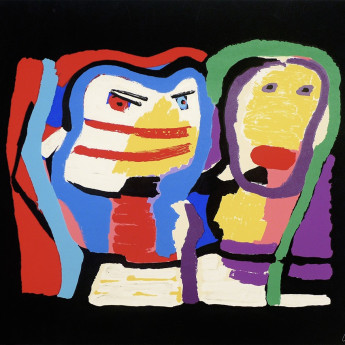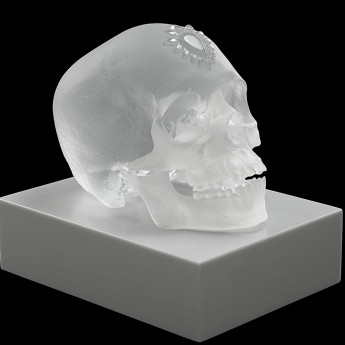
Details
Artist
Styles
// Pol Bury’s Senza titolo is a striking, surreal screen print featuring an abstracted architectural structure that appears to be in a state of transformation. The tall, tower-like form twists and contorts, with geometric patterns and distorted lines creating a sense of movement and instability. Known for his kinetic sculptures, Bury brings a sense of fluidity and tension to this two-dimensional work, making the structure appear as though it is both deconstructing and reassembling itself. The monochromatic palette emphasizes the intricate details of the lines and shapes, further enhancing the visual complexity of the piece. The artwork evokes themes of impermanence and transformation, reflecting Bury's fascination with the manipulation of form and space. This limited edition screen print captures the artist's unique ability to convey motion and dynamism through static imagery.
Senza titolo, 1980
form
Medium
Size
160 x 80 cm
- Inches
- Centimeters
Edition
Price
- USD
- EUR
- GBP
Details
Artist
Styles
// Pol Bury’s Senza titolo is a striking, surreal screen print featuring an abstracted architectural structure that appears to be in a state of transformation. The tall, tower-like form twists and contorts, with geometric patterns and distorted lines creating a sense of movement and instability. Known for his kinetic sculptures, Bury brings a sense of fluidity and tension to this two-dimensional work, making the structure appear as though it is both deconstructing and reassembling itself. The monochromatic palette emphasizes the intricate details of the lines and shapes, further enhancing the visual complexity of the piece. The artwork evokes themes of impermanence and transformation, reflecting Bury's fascination with the manipulation of form and space. This limited edition screen print captures the artist's unique ability to convey motion and dynamism through static imagery.
- Recently Added
- Price (low-high )
- Price (high-low )
- Year (low-high )
- Year (high-low )
What is Surrealism?
Surrealism began in the 1920s as an art and literary movement with the goal of revealing the unconscious mind and unleashing the imagination by exploring unusual and dream-like imagery. Influenced by Sigmund Freud’s theories of psychoanalysis, Surrealist artists and writers sought to bring the unconscious into rational life, blurring the lines between reality and dreams. The movement aimed to challenge conventional perceptions and express the irrational aspects of the human experience.














